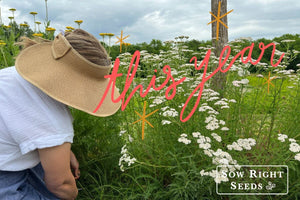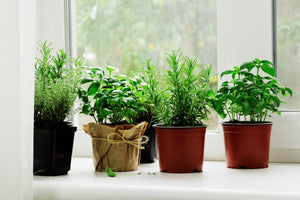How to Grow Moonflower Vines from Seed for a Glowing Night Garden
MoonflowerMoonflower blossoms will open at dusk and bloom all night. Their glowing white color and sweet scent will attract nighttime pollinators such as luna moths.
You’ll want to plant this delightful vining flower in a location where you can enjoy its dark green heart-shaped leaves by day and its fragrant blooms at night.

Moonflower Vining Plant
Moonflower (Ipomoea alba) is a white vining flower that blooms at night. With heart-shaped leaves, it closely resembles morning glory (Ipomoea purpureum), which has the opposite blooming pattern.
Several flowers are commonly called “Moonflowers” because of their white blossoms that bloom at night. This Moonflower, Ipomoea alba, is a vining plant with bright white blossoms and a sweet scent. The white, fragrant flowers open when the sun goes down and on cloudy days. The color and fragrance attract nighttime pollinators such as moths and bats.
How to Grow Moonflower From Seed
Moonflower seeds can be sown indoors 6 to 8 weeks before the first spring frost or outdoors after all danger of frost has passed. Follow these seed germination tips to greatly increase your success in starting moonflower seeds.
Tips for fail-proof moonflower seed germination
1 - Scarify or cut the hard outer seed coat.
2 - Soak moonflower seeds overnight.
3 - Plant seeds 1/2" deep and keep the soil moist.
4 - Keep the soil temperature between 60-70ºF.
5 - With scarification and soaking, moonflower seeds should germinate in 5 to 10 days.
Transplanting Moonflower Seedlings
Once your moonflower seedlings have at least two sets of true leaves and all danger of frost has passed, you can prepare to plant them outdoors. Temperatures should be between 60-70ºF. Harden off seedlings to acclimate them to outdoor life before transplanting.
Space moonflower plants six to eight inches apart in a sunny location with well-draining soil. Be careful not to disturb the roots when transplanting. Plant moonflower seedlings to the same depth that the plant was already growing.

How to Grow Moonflower Vines
Moonflower vines are simple to grow when given the right conditions. They are perennials in growing zones 10-12, but they can also be grown as annual flowers in cooler zones.
Moonflowers begin blooming in summer and will continue flowering until fall. They are not frost tolerant and will die off with freezing temperatures.
In moderate climates where they are grown as perennials, you can cut moonflower vines back when temperatures get too cold and cover the roots with mulch. When flowers are left on the vines, they will produce seed pods and self-seed.
The blooms on moonflower vines are brilliantly white and sweetly fragrant. They range in size from three to six inches wide. The vines typically grow between 10 and 20 feet in one season. These photosensitive vines require darkness at night to produce buds, so plant moonflowers away from bright yard or street lights for the best flowering.
Sun
Moonflowers can grow in part shade to full sun. Like most flowering plants, more sun equals more blossoms. At least 6 hours of sunlight is needed for this flowering vine.
Soil
Moonflower vines will grow well in average garden soil as long as it is well-draining. Water-logged soil can cause root rot.
Water
Regular watering should keep the soil moist without letting the roots sit in water. Dry moonflower plants will droop but should spring back when adequately watered. This plant prefers humid climates, so be sure to keep it well watered in dry locations.
Fertilizing
Phosphorus is beneficial for producing blooms. High nitrogen can cause excessive leaf growth and fewer blooms. You can apply a balanced fertilizer around every four weeks for good blossom and vine growth.
Trellising
Moonflower vines readily reach upwards, so provide a trellis for it to grab onto. Pruning is not necessary, but it will create a more bushy vine with more flowers. Pinching the growth ends will encourage branching, which will also result in more dense growth.
Containers
Moonflower can be grown successfully in pots as long as the soil drains well and is kept moist. Provide the vines with something to climb.
Solutions for pests and diseases
Moonflower isn’t susceptible to many pests and diseases. However, watch for common flower pests such as aphids and spider mites.
Also, avoid root rot and powdery mildew by using effective watering methods.

Moonflower FAQs
Is moonflower toxic?
Although they have the same common name, the moonflower vine (Ipomoea alba) is not the same as Datura. Datura blossoms have a deep trumpet shape and bloom in the daytime and at night. Datura is very toxic, while it’s only the seeds of moonflower vines that have a mild hallucinogenic effect. Since moonflower seeds are mildly toxic to humans and pets, use caution when planting them and remove the spent flowers before they go to seed.
Is it safe to touch moonflower?
Moonflower vine (Ipomoea alba) is safe to touch, unlike Datura.
Do moonflowers only bloom at night?
Moonflowers only bloom at night but sometimes will bloom on very cloudy days.
Do moonflower vines come back every year?
Moonflower vines can be perennials and can return in warm locations. In cold climates, they will only return if allowed to self-seed.
Is moonflower vine invasive?
It can become invasive in tropical and subtropical locations where conditions allow it to grow continually. However, in cold climates, it dies off in winter.
Enjoy your garden when the sun goes down!
Moonflower is a delightfully fragrant flower that is perfect in a glowing night garden. It will attract beautiful moths and other nighttime pollinators. You’ll want to plant this fragrant night bloomer where it will add extra enjoyment to those warm summer nights.
2 comments
Popular Posts
-

5 Healthy Reasons to Add Garden Goals to Your New Year's Resolutions
-

5 Easy Tips for Growing a Fabulous Indoor Herb Garden




Our seed packets contain approximately 13 grams of seeds, which is about 55 seeds.
Approximately how many seeds are in one package?
Leave a comment